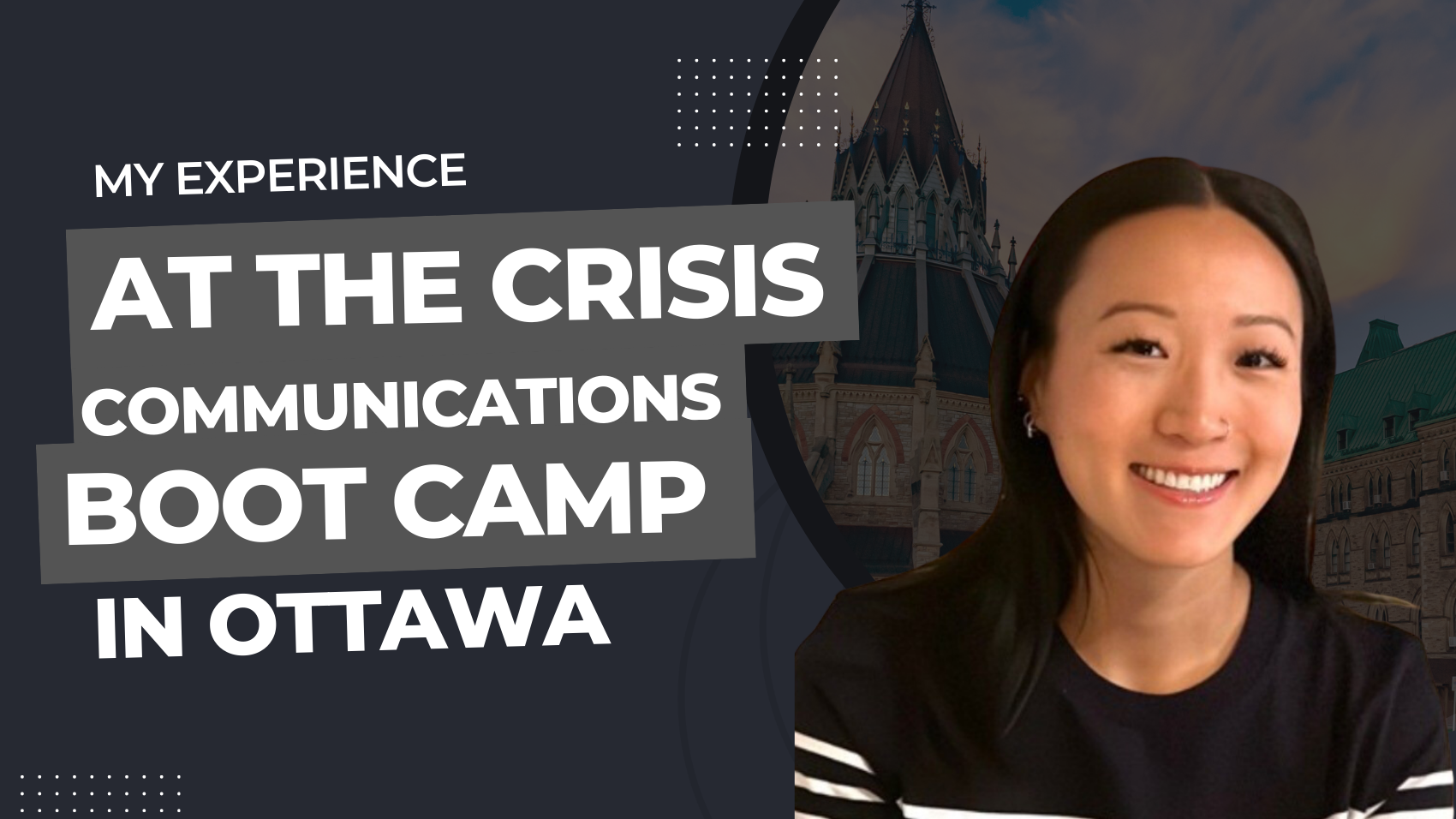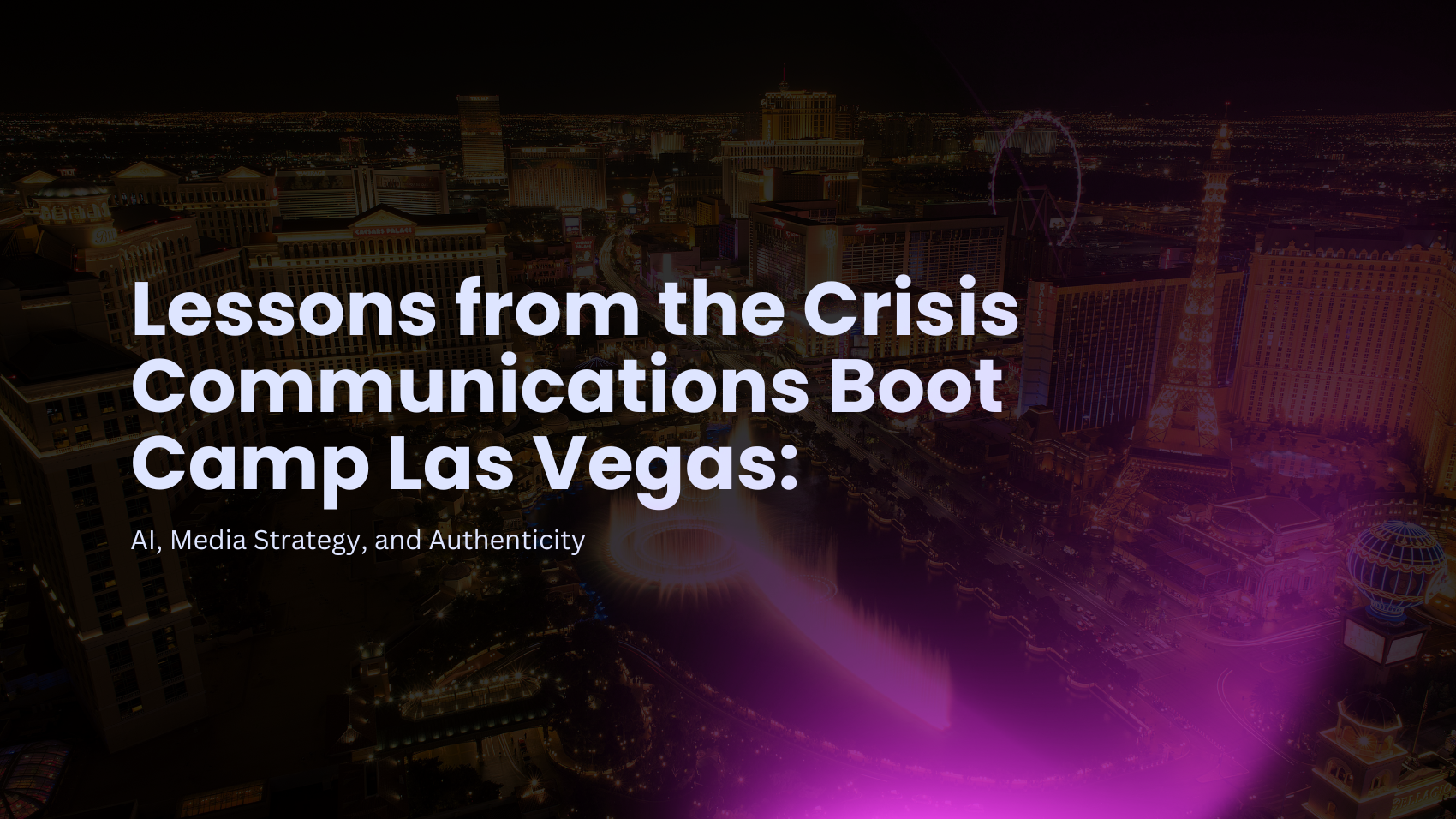 October 10, 2024
October 10, 2024

Lessons from the Crisis Communications Boot Camp Las Vegas: AI, Media Strategy, and Authenticity
October 23, 2024
by Kosta Petrov, Managing Director at P World
The world of crisis communications is evolving rapidly, with new challenges emerging as technology, misinformation, and social expectations continue to change. This was made clear during the Crisis Communications Boot Camp in Las Vegas, where industry leaders shared strategies for navigating today's fast-moving landscape. From artificial intelligence (AI) to sustainability and reputation management, these insights offer valuable guidance for those preparing for the next big crisis. Here are the most important takeaways from the event, featuring expert advice from professionals like Chris Gee, Dave Fleet, Dee Mostofi, Amanda Coffee, Jill Geer, Sally Stewart, and Callie Noakes.
AI: Navigating the Maze of Disinformation
Chris Gee, CEO of Chris Gee Consulting, kicked off the boot camp by tackling one of the biggest emerging threats in crisis communications: AI-fueled disinformation. With AI tools now capable of generating fake yet highly realistic content, separating fact from fiction is becoming a monumental task for organizations. Chris emphasized that traditional crisis response strategies won’t cut it in this new environment. Organizations need to adopt AI-driven tools to monitor sentiment, detect bot-generated content, and respond to real threats before they spiral out of control.
Chris shared his insights on AI-SEO, where optimizing for AI-driven search results is the new frontier. As AI systems increasingly dominate how people access information, controlling your narrative requires a shift in strategy. “AI can be a double-edged sword,” Chris explained. “It can either amplify disinformation or help manage crises more effectively if we learn how to use it.”
Countering Misinformation: Proactive Strategies
Dave Fleet, Global Head of Digital Crisis at Edelman, followed up by examining the pervasive nature of disinformation and how AI has escalated the issue. He explained that disinformation campaigns often start within small, niche communities but can quickly spread to mainstream audiences, damaging reputations and public trust. For organizations, the key is to identify these warning signs early and take proactive steps to counter false narratives.
Dave highlighted collaborative efforts to enhance digital literacy and the importance of preparing for misinformation before it becomes a full-blown crisis. “The sooner you act, the better your chances of mitigating damage,” he noted. Tools like disinformation risk assessments and simulations are essential to staying ahead of these emerging threats.
Navigating Media Relations in the Age of Permacrisis
As crises become more interconnected, media relations professionals need to rethink their strategies. Dee Mostofi, AVP of University External Communications at Stanford University, introduced the concept of a “permacrisis”—a state of continuous crises affecting every facet of society, from climate change to political instability. In this scenario, media relations is no longer about responding to one-off events; it's about building long-term resilience and trust with media outlets.
Dee emphasized the importance of proactive engagement with the media. Rather than waiting for a crisis to unfold, organizations should establish ongoing communication with journalists, ensuring that their side of the story is heard. “You need to anticipate the next wave of crises and have a strategy in place to maintain credibility,” Dee explained. Timeliness, transparency, and empathy are critical in responding to media inquiries and ensuring that your message cuts through the noise during long-term crises.
Effective Crisis Communications for Media and Employees
Amanda Coffee, Former Senior Director of Global Media Relations at Under Armour, shifted the focus to the internal side of crisis communication—specifically, how to engage employees during difficult times. One of the most important audiences in any crisis is your own team. What you tell them matters not only for morale but also because internal communication often leaks to external platforms like LinkedIn.
Amanda stressed that employees should be empowered as spokespeople during a crisis. By keeping them informed and aligned with the company’s messaging, organizations can extend their reach and ensure a consistent message across all platforms. “Employees are on the front lines, and what they say about the organization during a crisis can either reinforce or undermine your external messaging,” she explained.
Rebuilding Trust: USA Gymnastics' Journey
Few organizations have faced a more public crisis than USA Gymnastics, and Jill Geer, Chief Communications & Marketing Officer, shared how the organization worked to rebuild trust after its highly publicized scandal. Jill explained that rebuilding after such an existential crisis required deep introspection, policy reforms, and a rebranding effort that went far beyond a new logo.
USA Gymnastics didn’t just talk about change—it demonstrated it. From new leadership to prioritizing athlete safety, Jill emphasized that authentic, transparent communication was at the heart of the organization’s recovery. “You can’t fake transparency,” she said. “It has to be woven into everything you do if you want to rebuild trust.”
Crafting Crisis Communications That Work
Sally Stewart, Editor-in-Chief, Newsroom, Associate Director of Media Relations at Cedars-Sinai, reminded us of the timeless principles of crisis communications: clarity, speed, and empathy. In moments of crisis, your message needs to be short, concise, and impactful. “Speed is critical, but so is tone,” she said, advising that pre-drafted statement templates can make all the difference when time is of the essence.
Sally’s key takeaway was that less is more. A well-crafted statement doesn’t need to be long—it needs to address the situation, show empathy, and convey confidence. Having the right strategy in place before a crisis hits can ensure that you maintain control over the narrative and avoid escalating an already sensitive situation.
Authenticity in Sustainability Communications
The boot camp concluded with a focus on one of the most pressing topics for businesses today: sustainability. Callie Noakes, Global Head of External Communications at Mars, discussed how to communicate sustainability efforts without falling into the trap of greenwashing. In an age where consumers are more skeptical than ever, Callie emphasized that authenticity is critical. “Consumers are watching, and they can tell when a company is just paying lip service to sustainability,” Callie warned.
He shared actionable insights on how to navigate the complexities of sustainability communication. One of his key points was the importance of partnerships—companies that collaborate with reputable organizations are much more likely to gain consumer trust. Callie also highlighted the importance of simplifying complex topics. Sustainability is a difficult subject, but that doesn’t mean the messaging has to be complicated. “Put down the PhDs and focus on storytelling that invites consumers into the journey,” he advised.
The Crisis Communications Boot Camp 2024 offered a wealth of insights into the future of crisis management, from navigating AI-driven misinformation to building trust through transparency and sustainability. The common thread? Preparation and authenticity. In a world where crises are inevitable and often interconnected, the key to success lies in being proactive, adaptable, and genuine in every communication.
Whether it’s adopting new AI tools, building long-term media relationships, or engaging employees and consumers, the future of crisis communications will depend on our ability to respond with integrity and foresight.
Looking ahead, don’t miss our upcoming Boot Camps in Vancouver, Utah, Los Angeles, and Chicago—each offering more actionable insights to help your organization navigate the complex world of crisis communications.